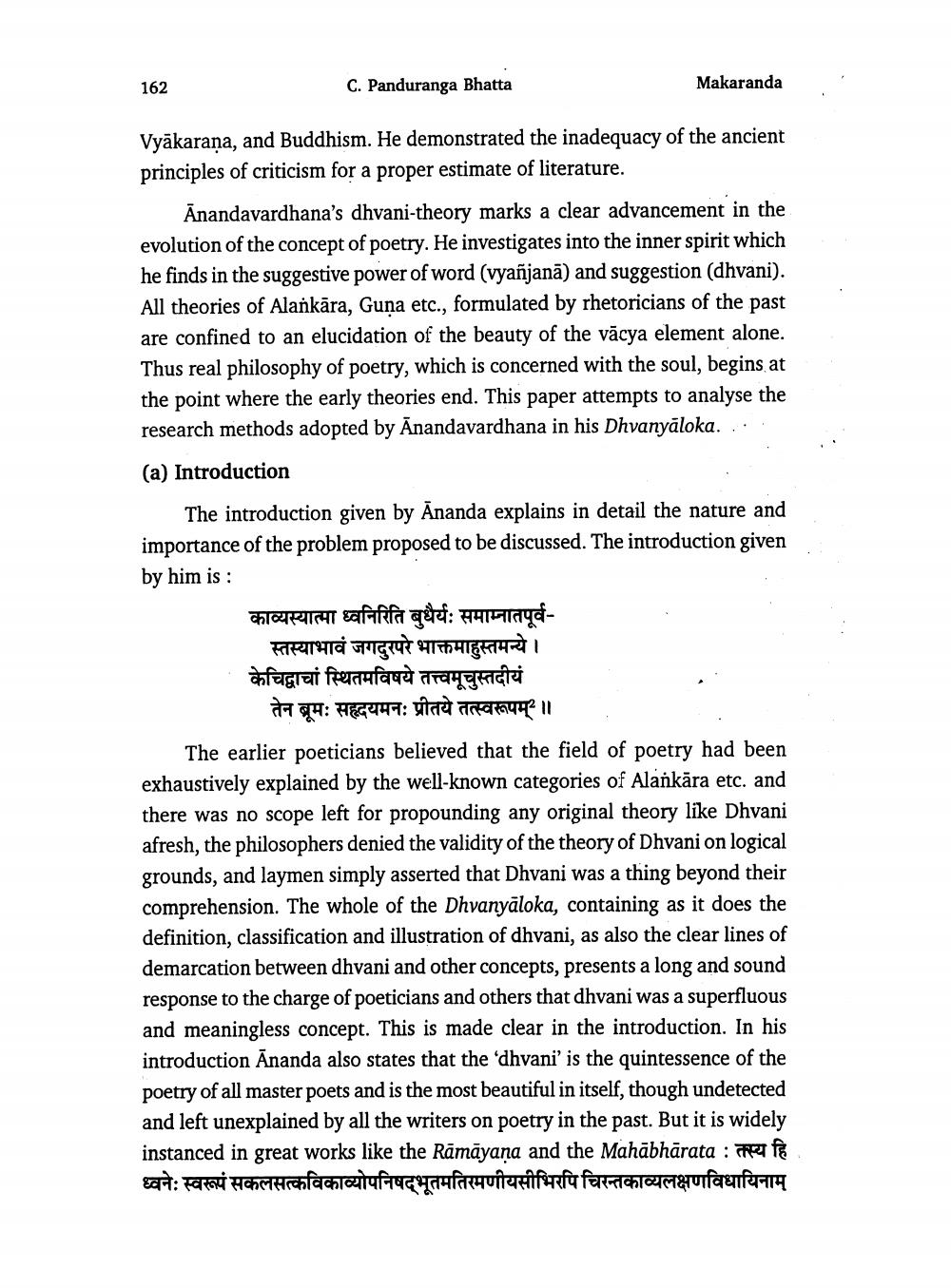________________
162
C. Panduranga Bhatta
Makaranda
Vyākarana, and Buddhism. He demonstrated the inadequacy of the ancient principles of criticism for a proper estimate of literature.
Anandavardhana's dhvani-theory marks a clear advancement in the evolution of the concept of poetry. He investigates into the inner spirit which he finds in the suggestive power of word (vyañjanā) and suggestion (dhvani). All theories of Alankāra, Guna etc., formulated by rhetoricians of the past are confined to an elucidation of the beauty of the vācya element alone. Thus real philosophy of poetry, which is concerned with the soul, begins at the point where the early theories end. This paper attempts to analyse the research methods adopted by Anandavardhana in his Dhvanyaloka...
(a) Introduction
The introduction given by Ananda explains in detail the nature and importance of the problem proposed to be discussed. The introduction given by him is :
काव्यस्यात्मा ध्वनिरिति बुधैर्यः समाम्नातपूर्व
स्तस्याभावं जगदुरपरे भाक्तमाहुस्तमन्ये । केचिद्वाचां स्थितमविषये तत्त्वमूचुस्तदीयं
तेन ब्रूमः सहृदयमनः प्रीतये तत्स्वरूपम् ॥ The earlier poeticians believed that the field of poetry had been exhaustively explained by the well-known categories of Alankāra etc. and there was no scope left for propounding any original theory like Dhvani afresh, the philosophers denied the validity of the theory of Dhvani on logical grounds, and laymen simply asserted that Dhvani was a thing beyond their comprehension. The whole of the Dhvanyāloka, containing as it does the definition, classification and illustration of dhvani, as also the clear lines of demarcation between dhvani and other concepts, presents a long and sound response to the charge of poeticians and others that dhvani was a superfluous and meaningless concept. This is made clear in the introduction. In his introduction Ananda also states that the 'dhvani' is the quintessence of the poetry of all master poets and is the most beautiful in itself, though undetected and left unexplained by all the writers on poetry in the past. But it is widely instanced in great works like the Rāmāyana and the Mahābhārata : f ध्वने: स्वरूपं सकलसत्कविकाव्योपनिषद्भूतमतिरमणीयसीभिरपि चिरन्तकाव्यलक्षणविधायिनाम




